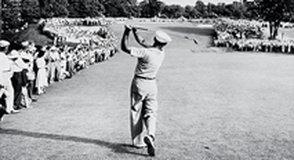- HOME・ホーム
-
日本語
-
About Tom Fielding Golfについて
- Teaching Philosophy
- Privacy Policy
- Tom Fielding Golf School Japan - Golf Improvement BLOG
-
Blog and News Updates
>
- How good a golfer are you right now
- How Far Should I Hit My 7 Iron?
- Most Golf Fitness Misses the Mark Completely
- The Mid Round Slump!
- Take This Quick Strike Test To See What Level You Are
- Golf Camps・ゴルフ合宿
- 2019 Summer Golf camp photo galleries
- JP-3 day / 2 night: Golf Camp 3日・2泊ゴルフ合宿
- EN-3 day / 2 night: Golf Camp
- APRIL/MAY2019 Newsletter: EN version
- February 2019 Newsletter: EN version
- February 2019 Newsletter: JP version
- Golf Fitness
- Why is change so difficult
-
Lesson Articles
>
- How To Practice Golf At Home – 6 Steps To Practicing At Home
- Internal & External focus - JP
- Pro Golfers are not that good
- 3 essentials for CONSISTENCY IN GOLF
- The Golf Swing and negative words
- Beat the Heat
- Hot Weather Guidelines
- Swing Radius
- Exclusive 4 steps for improved ball striking
- Hitting from different lies
- Weight transference
- POSTURE
- Training in different climates
- Fitness Friday: Preparing for a cold-weather round
- How far will the golf ball go in cold weather
- TrackMan: Definitive Answers at Impact and More
- Clearing the left side too early is damaging.
- The Ball Flight Laws
- Head Position
- Distance = Club Head Speed + Square Impact + launch angle
- Attention! The Pre-Shot Routine
- The Basic Skill of Chipping
- 4 stages of learning
- How to Break 90 - Part 1
- How to Break 90 #2
- How to Learn a Great Golf Swing
- Perfect Practise makes practise.
- 3 Essentials to breaking a habit
- Basic principles of exercise - Points to bring out the maximum practicing effect
- Things to consider before aiming at the flagstick
- Learnig motor skills: The GOLF Swing
- RULES OF GOLF PAGE >
- Golf Humour >
-
ゴルフスクール Menu
- 2024 SUMMER Golf Camp in Japan-EN >
- 2024SGC-JP サマーゴルフ
- Melbourne Golf Tour: March 2025
- Teaching locations: Lessons inquires & bookings >
- Trial Golf Lesson >
- 2 hole Private・貸切 training program
- 1/2 day Golf School: Kashikiri program@Morinagatakako CC
- Internet Golf Lesson >
- Testimonials Customer feedback
-
Photo / Video Gallery
- 2023 Summer gof camp photo gallery
- 2022 Summer Golf Camp - Photo Gallery
- 1 / 2 day golf camp - Photo gallery
- 2021 Summer Golf Camp - photo gallery
- 2020 Summer golf camp@ Appi Kogen Iwate prefecture
- 2019 Summer Golf camp photo gallery
- Summer golf camp 2018 photo gallery
- Photo Gallery from the Australia Vs Japan Junior challenge
- 2017 5周年のSummer golf camp-Photo/Video gallery
- 2016 4周年のSummer Golf Camp Photo Gallery
- 2015 The 3rd Summer Golf Camp @ Pelican Waters Golf Resort
- 2014 Summer Golf camp photo gallery
- 2013 Summer Golf Camp at Pelican Waters, Sunshine Coast, Queensland Australia.
- 2014 The 3rd Students Cup Pro-Am 2014 - Photo Gallery
- 2013 The 2nd Students Cup Pro-Am 2013
- Video Gallery
How did the size of the golf hole come to be standardized at 4.25inches?????
0 Comments
The “Breaking 90” Practice Plan with the Simulator
This practice plan is built entirely around learning, refining, and testing the three shots that you need to break 90. When you can complete each Test, you’re ready to take your game to the course to bag that 89. Phase 1: The Iron Shot The first thing you need to do is find out exactly how far you hit your chosen iron (let’s call it a 7I), and each club below it (8I, 9I…). Next, you need to work on your accuracy and consistency. For accuracy, make sure you’re hitting shots to a target and keeping track of where your misses go. For consistency, the goal is to hit every shot the full distance, whether that’s 150, 155, or 160 yards. Plus or minus a few yards is fine, but you can’t break 90 if you’re laying the sod over the ball. Finally, spend some of your practice time on your shorter irons. These may come into play as well, depending on the course. Test: Hit 9/10 iron shots into a 60 foot (left to right) window at least 150 yards away. Phase 2: The Pitch This is probably the most difficult part of this plan for most golfers. You will need to develop a reliable pitch shot that will allow you to hit a green from 20 to 100 yards away. The method you use does not matter: you can use Dave Pelz’s “Clock” method, a Stan Utley pitch, or whatever home brewed method you concoct. The key is reliability. You do NOT need to go flag hunting. This plan is based on hitting the green, not knocking down pins. Practice hitting shots to the biggest, safest part of the green, just like you will on the course. Part of why this is so difficult is that good short game practice facilities are hard to come by in the Tokyo region without having to drive at least one hour and half. If you don’t have one, improvise. Take some buckets or towels and place them on the range at varying distances. Just be sure to clean up after yourself. When you practice, don’t hit the same length shot over and over; this is not how you will play on the course. Hit a 50 yarder, then a 20 yarder, than a 90 yarder. Keep track of the distances that are best and worst for you. This will be important for your course management. Test: Hit the green 10/10 times from varying distances. Don’t hit the same length shot twice in a row or more than twice overall. Phase 3: The Putt The next time you are at a golf course spend some time on the putting green. The primary thing that you need to do is lag putt well and clean up your short putts, so build your practice around that. Here are some sample drills: Set up 4 balls around the hole at roughly 3 feet and make all of them. Repeat until you’ve made 20 in a row. Put 3 balls at 3’, 5’, and 7’, all on the same line, for a total of 9 balls. Make all the 3’ putts in a row, then move back to the 5’ putts then the 7’ putts. The goal is to make 9 in a row. If you miss, start over. Drop 3 balls at 30’ (or 40’, 50’, etc). Putt each of them towards a cup or a tee. If the balls end up within 3’, you win. See how many wins you can get in a row. Test: Take one ball and drop it anywhere from 10 to 60 feet from the cup. Putt it until you hole it out. Do this 18 times, from 18 different spots. If you can complete this in 36 or fewer strokes, you pass. How to Break "90" - Part 1 "The Introduction" In this article, I’m wish to introduce you to a concept plan for a definitive and reliable method on How to Break 90. Why? Because I know that it’s one goal that a huge majority of avid golfers share. “I want to break 90” is the second most common goal that my students have, behind only, “be more consistent.” I will warn you that this plan is unorthodox. Then again, if doing things the “normal” way worked, you wouldn’t be reading this, would you? Follow this plan accurately and I give you assurances that your chances of shooting an 89 (or better) will improve dramatically in no time at all. A huge part of breaking through any scoring barrier is creating the proper mindset. To break 90, you need to do two things: 1) Realize that 89 is 17 bogeys and 1 par (on a par 72 course). That’s it. I know that every golfer who wants to break 90 has made lots of pars and bogeys before, so there’s nothing involved in breaking 90 that you can’t do already. 2) 2) Pick the right tee box. I’ll deal with the specifics of this shortly, but you cannot go into this with the idea that you have to break 90 from the tips. Breaking 90 is breaking 90, period. If you have to go all the way to the forward tees to break 90, do it. Scoring barriers are mental more than anything else, and once they’ve fallen, they’re down for good. You should want to break them as soon as possible, regardless of the yardage of the course The Shots and strategies that YOU Need There are a number of strategies to be applied to Breaking 90. You must abide by these strategies, lest you be doomed to shooting 91 or more for the rest of your days. To begin with, determine which is the longest club that you have the most control with that you can hit 150 yards or more without ever getting in trouble. This chosen club may not be the driver and if it isn’t don’t even bring it with you to the golf course. Next by overall simply thinking differently, you can do a lot to reach the goal of breaking 90 without changing your swing much at all.
In the next golf improvement program newsletter, I will introduce the How to Break 90 - Part 2
|
- HOME・ホーム
-
日本語
-
About Tom Fielding Golfについて
- Teaching Philosophy
- Privacy Policy
- Tom Fielding Golf School Japan - Golf Improvement BLOG
-
Blog and News Updates
>
- How good a golfer are you right now
- How Far Should I Hit My 7 Iron?
- Most Golf Fitness Misses the Mark Completely
- The Mid Round Slump!
- Take This Quick Strike Test To See What Level You Are
- Golf Camps・ゴルフ合宿
- 2019 Summer Golf camp photo galleries
- JP-3 day / 2 night: Golf Camp 3日・2泊ゴルフ合宿
- EN-3 day / 2 night: Golf Camp
- APRIL/MAY2019 Newsletter: EN version
- February 2019 Newsletter: EN version
- February 2019 Newsletter: JP version
- Golf Fitness
- Why is change so difficult
-
Lesson Articles
>
- How To Practice Golf At Home – 6 Steps To Practicing At Home
- Internal & External focus - JP
- Pro Golfers are not that good
- 3 essentials for CONSISTENCY IN GOLF
- The Golf Swing and negative words
- Beat the Heat
- Hot Weather Guidelines
- Swing Radius
- Exclusive 4 steps for improved ball striking
- Hitting from different lies
- Weight transference
- POSTURE
- Training in different climates
- Fitness Friday: Preparing for a cold-weather round
- How far will the golf ball go in cold weather
- TrackMan: Definitive Answers at Impact and More
- Clearing the left side too early is damaging.
- The Ball Flight Laws
- Head Position
- Distance = Club Head Speed + Square Impact + launch angle
- Attention! The Pre-Shot Routine
- The Basic Skill of Chipping
- 4 stages of learning
- How to Break 90 - Part 1
- How to Break 90 #2
- How to Learn a Great Golf Swing
- Perfect Practise makes practise.
- 3 Essentials to breaking a habit
- Basic principles of exercise - Points to bring out the maximum practicing effect
- Things to consider before aiming at the flagstick
- Learnig motor skills: The GOLF Swing
- RULES OF GOLF PAGE >
- Golf Humour >
-
ゴルフスクール Menu
- 2024 SUMMER Golf Camp in Japan-EN >
- 2024SGC-JP サマーゴルフ
- Melbourne Golf Tour: March 2025
- Teaching locations: Lessons inquires & bookings >
- Trial Golf Lesson >
- 2 hole Private・貸切 training program
- 1/2 day Golf School: Kashikiri program@Morinagatakako CC
- Internet Golf Lesson >
- Testimonials Customer feedback
-
Photo / Video Gallery
- 2023 Summer gof camp photo gallery
- 2022 Summer Golf Camp - Photo Gallery
- 1 / 2 day golf camp - Photo gallery
- 2021 Summer Golf Camp - photo gallery
- 2020 Summer golf camp@ Appi Kogen Iwate prefecture
- 2019 Summer Golf camp photo gallery
- Summer golf camp 2018 photo gallery
- Photo Gallery from the Australia Vs Japan Junior challenge
- 2017 5周年のSummer golf camp-Photo/Video gallery
- 2016 4周年のSummer Golf Camp Photo Gallery
- 2015 The 3rd Summer Golf Camp @ Pelican Waters Golf Resort
- 2014 Summer Golf camp photo gallery
- 2013 Summer Golf Camp at Pelican Waters, Sunshine Coast, Queensland Australia.
- 2014 The 3rd Students Cup Pro-Am 2014 - Photo Gallery
- 2013 The 2nd Students Cup Pro-Am 2013
- Video Gallery



 RSS Feed
RSS Feed